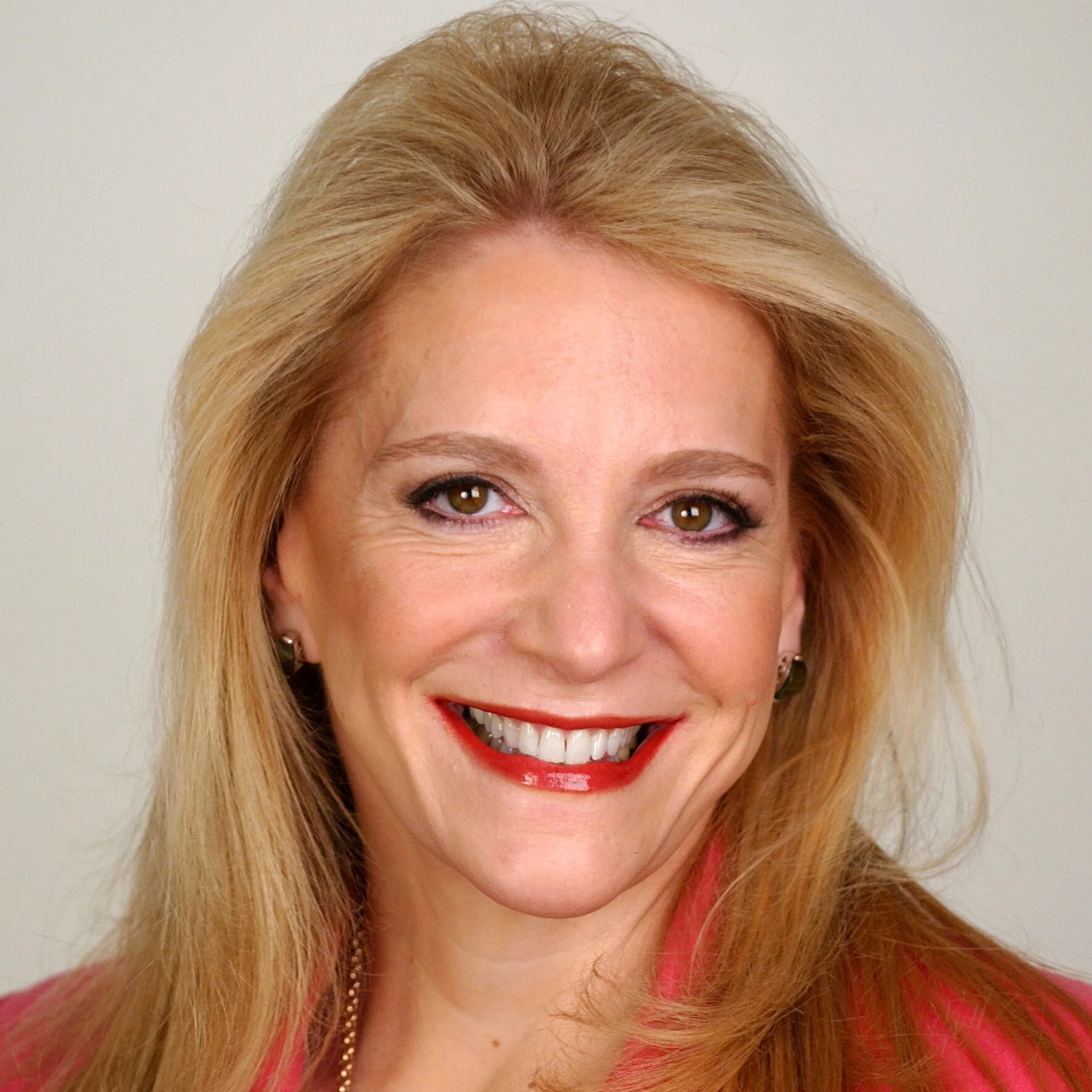Seven Steps to Build Your Billion-Dollar Business Today
The future might be uncertain, but 'right now' is always a great time to dive in and solve someone else's problems with your new business.


Building and sustaining a business during our new economic reality (or unreality) can feel daunting. I know your head is spinning; mine is. I feel your pain.
There is no easy solution, but I’m going to explore some of the basic strategies you can employ to build your billion-dollar business in any economic environment, including this one.
Step No. 1: Find a problem to solve
I advise my clients that the number one step to building any business is to first identify a need for your product or service or a problem that needs to be solved.
From just $107.88 $24.99 for Kiplinger Personal Finance
Become a smarter, better informed investor. Subscribe from just $107.88 $24.99, plus get up to 4 Special Issues

Sign up for Kiplinger’s Free Newsletters
Profit and prosper with the best of expert advice on investing, taxes, retirement, personal finance and more - straight to your e-mail.
Profit and prosper with the best of expert advice - straight to your e-mail.
Your solution will also have to be unique or, at the least, better than other companies are supplying.
If your goal is to be big, you will also need to know how to scale your idea. And your superpower will be your courage and your ability to listen to the market and be agile enough to pivot to meet changes necessary in all areas of your business.
Did I mention that you will also need enough capital to make this all happen?
Step No. 2: Focus on a large, global and growing market
If you are looking to make billions, consider these industries: AI and machine learning, fintech, health tech and longevity, clean energy, mental health and wellness, gaming and smart cities, among others.
There is vast global growth potential for companies that can build in these markets. You should tailor your offerings for regional expansion and also be flexible enough to partner and collaborate with local businesses. This can ease your market entry.
Step No. 3: Build a scalable business model
After you test your products or services, you need to make sure that you build your customer base to have recurring revenue. It costs a lot to procure a customer, and you want that revenue to be as evergreen as possible.
That doesn’t mean that you won’t add goods and services to your roster; it’s just that it is really costly to reinvent your customer base each time you sell a product.
Your product will become more valuable as more people use it and spread the word in this world of social media.
Step No. 4: Leverage technology for rapid growth
This might seem obvious, but it’s not. You must ensure that your company is as automated as possible and that it is data-driven, utilizing analytics to manage all aspects of your business for rapid and cost-effective growth.
You must also build an ecosystem of products and services that respond to the market so you can pivot when needed.
Your technology will also assist with distribution and marketing as you leverage digital channels for rapid and cost-effective growth, making it easier to reach broader audiences.
Technology will also help you to identify diversification in your supply chain that may be under threat in this world of on-again, off-again tariffs. You don’t want to get squeezed out of a supplier or risk significant cost increases, if you can avoid it.
Step No. 5: Focus on customer experience and build your brand
If you have the ability and desire to listen to your customers, they will inform you about their needs and how well you are performing. This means that you have to build a user-centric company/product/service design that encourages customer loyalty.
You can emphasize the unique value of your product and offer premium features to justify higher prices.
Customers want to be loyal to a brand and share their experiences with their friends. Create that community around your brand where you can iterate seamlessly.
Your brand and its accompanying storytelling must be synonymous with solving the customers’ problems.
Step No. 6: Assemble a world-class team of employees
I know this is not easy, but you must be the leader to hire passionate, resilient and adaptable people who believe in your mission and can grow with you.
You should be transparent with your team about your challenges, their risks and what you expect of them. Incentivize these individuals financially, not only with salaries, but also with equity compensation.
Looking for expert tips to grow and preserve your wealth? Sign up for Building Wealth, our free, twice-weekly newsletter.
Coming out of the banking world, I know that it is vital for your bankers and investors to feel that they are a part of your team. Ideally, you want them to contribute more than just capital and loans.
They need to believe in your actions and provide funding to grow. Additionally, you must stay in close contact through good and bad times and make sure that there are never any surprises.
Speaking of financial planning, our fluctuating exchange rates can compound the tariff costs. Try to hedge against currency risks when you can. There are insurance products specifically designed for political and trade risks.
If you can, try to maintain a reserve to help absorb these unexpected tariff expenses. Your bankers can advise you.
Step No. 7: Develop an agile and sustainable competitive advantage
There are so many cyberthreats to any business from here and abroad. In order to grow with a competitive advantage to solve the big problem(s), you will have to protect your core technology via patents and protected intellectual property (IP) and leverage your proprietary data to build smarter solutions to address your customers’ problems.
To build a competitive advantage, you will also have to be agile and resilient. This means having contingency plans to pivot for any market disruptions while constantly investing in research and development to stay ahead of the competition by exploring new products and new markets.
Try to include tariff clauses in your contracts with suppliers that can allow for price adjustments. Proactively negotiating for more extended agreements with fixed prices to shield yourself from sudden increases or shortages may give you a competitive advantage.
My favorite example: Airbnb
In 2007, Brian Chesky and Joe Gebbia needed to raise some money to pay their rent. They had an idea to rent out an air mattress in their apartment to people attending a conference because all of the local hotel rooms were booked.
They identified a need and a problem and were bold enough to come up with an idea to solve it. You know the rest of the story. Many people are looking for alternatives to hotels, and many people are willing to rent their homes. Voilà, a billion-dollar business was born.
My next favorite example: My company
I wanted to teach my kids about money when they were small, and at the time, I was a president of a bank in New York. I knew that it was essential to raise financially savvy children.
I schlepped my kids to 10 bookstores in Manhattan and couldn’t find any books on the topic of teaching kids about money. My 3-year-old daughter quipped, “Mommy, why don’t you just write the books?” So, Mommy did.
I found a big need and problem to solve and the topic is mainstream today, after I led the way. Earlier this year, my 29th book came out: Get Off Your Assets: A Woman's Guide to Avoid Getting Screwed in Your Gray Divorce. I also advise other business owners on building their own billion-dollar companies. Visit me at www.TheCourageousCompany.biz.
This process is not easy, but if you want to build that billion-dollar business, you are going to have to find that need and problem and uniquely solve it … and know that there will be lots of nights when you will wake up in a cold sweat. Keep going (and maybe take a quick nap)!
Related Content
- Thinking of Starting a Business? Tips for Avoiding Failure
- How Soon Can You Walk Away After Selling Your Business?
- How to Teach Your Kids About the Tax Facts of Life
- Can’t Afford It? There’s No Shame in Saying So
- 529s: No Longer the Ho-Hum Investing Device for College
Profit and prosper with the best of Kiplinger's advice on investing, taxes, retirement, personal finance and much more. Delivered daily. Enter your email in the box and click Sign Me Up.

Neale Godfrey is a New York Times No. 1 bestselling author of 27 books that empower families (and their kids and grandkids) to take charge of their financial lives. Godfrey started her journey with The Chase Manhattan Bank, joining as one of the first female executives, and later became president of The First Women's Bank and founder of The First Children's Bank. Neale pioneered the topic of "kids and money," which took off after her 13 appearances on The Oprah Winfrey Show.
-
 Nasdaq Sinks 418 Points as Tech Chills: Stock Market Today
Nasdaq Sinks 418 Points as Tech Chills: Stock Market TodayInvestors, traders and speculators are growing cooler to the AI revolution as winter approaches.
-
 23 Last-Minute Gifts That Still Arrive Before Christmas
23 Last-Minute Gifts That Still Arrive Before ChristmasScrambling to cross those last few names off your list? Here are 23 last-minute gifts that you can still get in time for Christmas.
-
 The Rule of Compounding: Why Time Is an Investor's Best Friend
The Rule of Compounding: Why Time Is an Investor's Best FriendDescribed as both a "miracle" and a "wonder," compound interest is simply a function of time.
-
 Nasdaq Sinks 418 Points as Tech Chills: Stock Market Today
Nasdaq Sinks 418 Points as Tech Chills: Stock Market TodayInvestors, traders and speculators are growing cooler to the AI revolution as winter approaches.
-
 The Rule of Compounding: Why Time Is an Investor's Best Friend
The Rule of Compounding: Why Time Is an Investor's Best FriendDescribed as both a "miracle" and a "wonder," compound interest is simply a function of time.
-
 If You're a U.S. Retiree Living in Portugal, Your Tax Plan Needs a Post-NHR Strategy ASAP
If You're a U.S. Retiree Living in Portugal, Your Tax Plan Needs a Post-NHR Strategy ASAPWhen your 10-year Non-Habitual Resident tax break ends, you could see your tax rate soar. Take steps to plan for this change well before the NHR window closes.
-
 Stocks Chop as the Unemployment Rate Jumps: Stock Market Today
Stocks Chop as the Unemployment Rate Jumps: Stock Market TodayNovember job growth was stronger than expected, but sharp losses in October and a rising unemployment rate are worrying market participants.
-
 The Delayed November Jobs Report Is Out. Here's What It Means for the Fed and Rate Cuts
The Delayed November Jobs Report Is Out. Here's What It Means for the Fed and Rate CutsThe November jobs report came in higher than expected, although it still shows plenty of signs of weakness in the labor market.
-
 Your Year-End Tax and Estate Planning Review Just Got Urgent
Your Year-End Tax and Estate Planning Review Just Got UrgentChanging tax rules and falling interest rates mean financial planning is more important than ever as 2025 ends. There's still time to make these five key moves.
-
 What Makes This Business So Successful? We Find Out From the Founder's Kids
What Makes This Business So Successful? We Find Out From the Founder's KidsThe children of Morgan Clayton share how their father's wisdom, life experience and caring nature have turned their family business into a respected powerhouse.
-
 Stocks Struggle Ahead of November Jobs Report: Stock Market Today
Stocks Struggle Ahead of November Jobs Report: Stock Market TodayOracle and Broadcom continued to fall, while market participants looked ahead to Tuesday's jobs report.